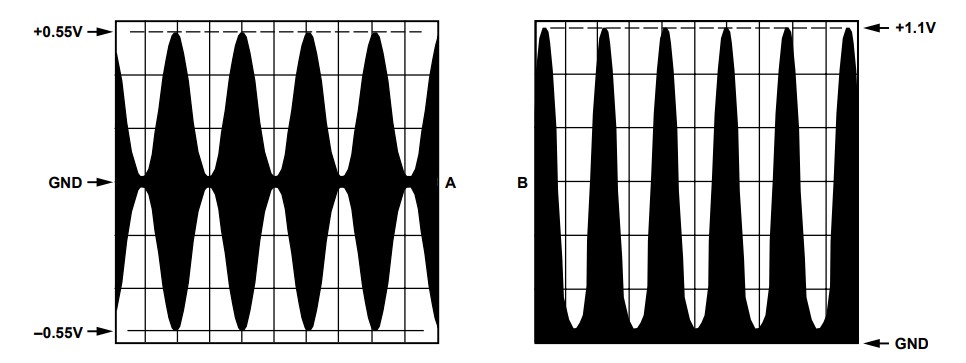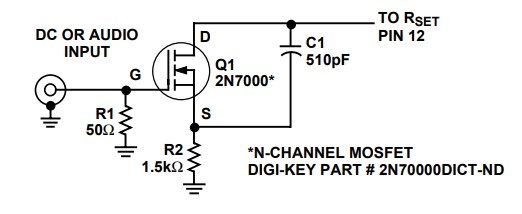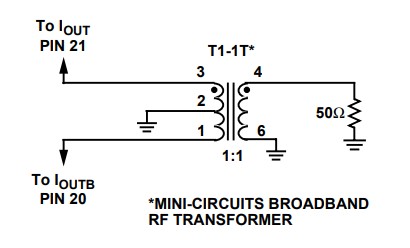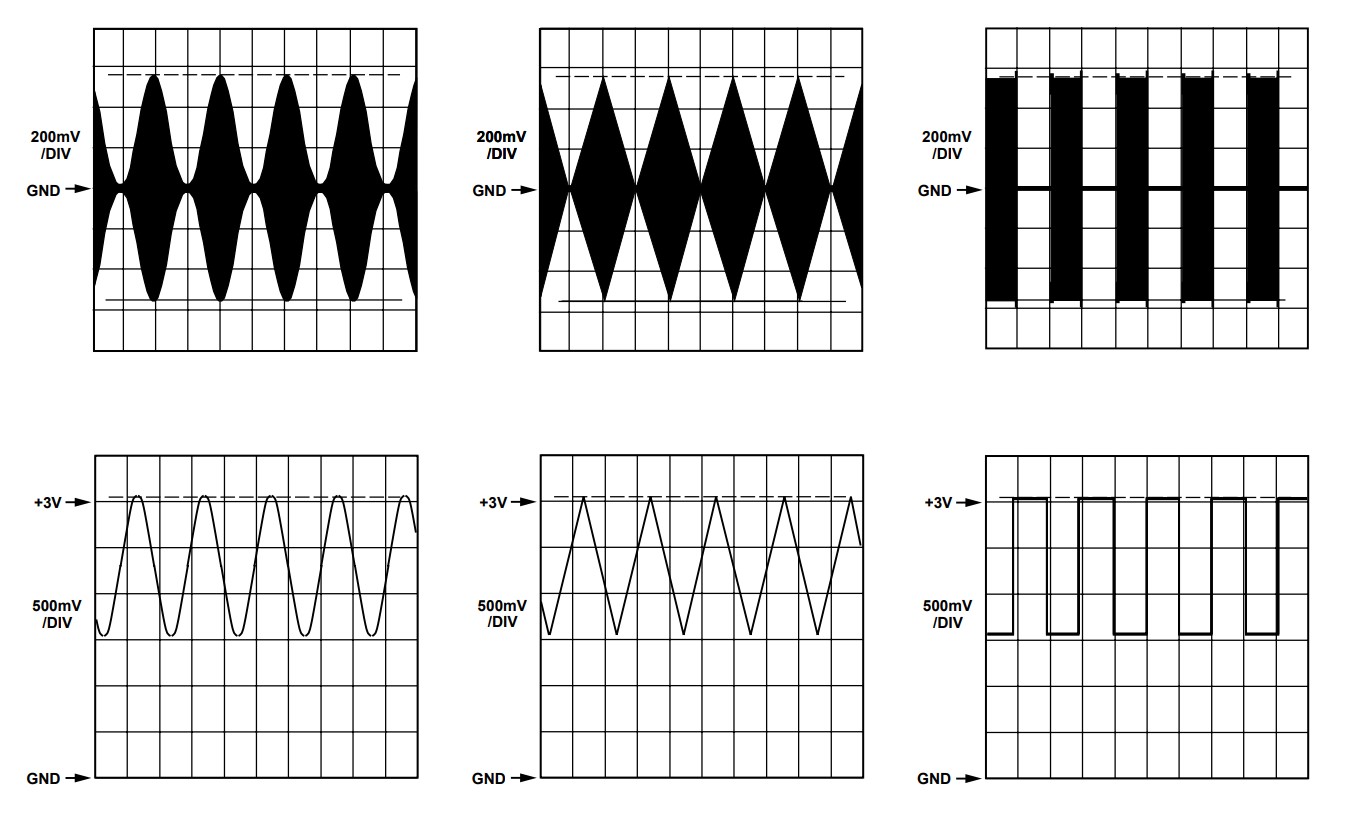AN-423: Amplitude Modulation of the AD9850 Direct Digital Synthesizer
This application note will offer a method to voltage control or amplitude modulate the output current of the AD9850 DDS using an enhancement mode MOSFET to replace the fixed RSET resistor; and a broadband RF transformer to combine the DDS DAC outputs to produce a symmetrical AM modulation envelope. Modulation with reasonable linearity is possible at rates exceeding 50 kHz. The AD9850 DDS output current (20 mA maximum) is normally set with a fixed resistor from the RSET (Pin 12) input to ground. The DAC outputs are unipolar and complementary (180 degrees out of phase) of each other.
Use of an enhancement mode MOSFET is in keeping with the single supply concept. The design is simple and parts count minimal. Combining the IOUT and IOUTB DAC outputs in a center-tapped broadband RF transformer produces a symmetrical modulation envelope as seen in Figure 1(A). Figure 1(B) shows the effect of not combining the two outputs and simply observing one output— asymmetrical amplitude modulation. The same signal was used to modulate both configurations.

Figure 1. Symmetrical (A) and asymmetrical (B) amplitude modulation envelopes.
The voltage at the RSET pin is part of the feedback loop of the (internal) control amplifier and must not be externally altered. The RSET modification circuit, Figure 2, uses Q1 as a variable resistor and R2 as a fixed current limit resistor in case Q1 is allowed to turn on too much. C1 inhibits noise when Q1 is operated near cutoff. R1 lowers the input impedance for additional noise prevention. The input voltage to Q1 required to fully modulate the AD9850 output is approximately 1.5 volts p-p and is dc offset by approximately 2.3 volts, see Figure 4.

Figure 2. RSET Modification.
Figure 3 illustrates the combining of the DAC true and complement outputs using a 50 kHz to 200 MHz broadband RF transformer. The transformer performs a 1:1 impedance and voltage transformation. The load resistance on the secondary winding, 50Ω, is reflected back to the primary. Since the transformer primary is center-tapped to ground, each DAC output will see a 25Ω load and develop a maximum of approximately 0.5 volts p-p (20 mA × 25Ω = 0.5 V). The two DAC outputs are summed and appear at the transformer secondary as approximately 1 V p-p.

Figure 3. Output Modification.
Presented below in Figure 4 are 10 kHz modulation envelopes and their associated input signals to the gate of Q1.

Figure 4. 10 kHz Modulation Envelopes.
This method of amplitude modulation presents an easy solution to voltage control of the AD9850 output amplitude. Designers interested in controlling only a single output can eliminate the transformer. Finally, those persons desiring digital control of the AD9850 DAC amplitude may wish to consider digital potentiometers in the 50 kΩ to 100 kΩ range.
